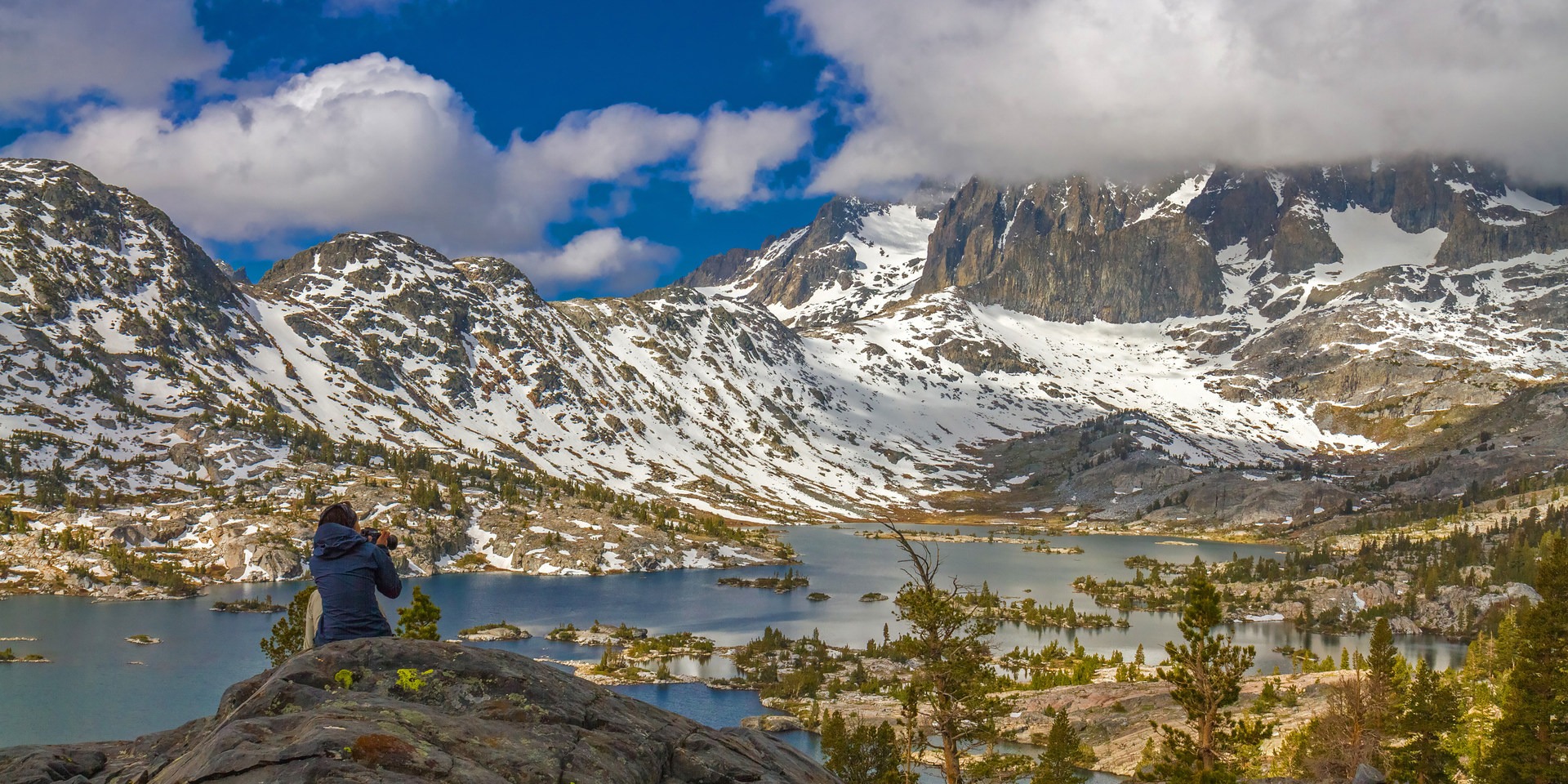You are here
Regarded by many as the premier hiking trail in the country, the John Muir Trail (JMT) runs along the backbone of California’s High Sierra between Yosemite National Park and the summit of Mount Whitney. The 211-mile long trail commemorates the influential naturalist and founder of the Sierra Club, John Muir, who’s understanding of the landscape and voice for conservation laid the groundwork for protecting much of the Sierra through the establishment of Yosemite, Kings Canyon and Sequoia national parks. The JMT can be done in segments or as a thru-hike, many opting for the latter. Pre-planning is critical to a successful JMT thru-hike, and advance permits are required. Most hikers take around three weeks to complete the journey following the trail southbound (SOBO) from Yosemite Valley. See the John Muir Trail Overview for more information on logistics and permit information.
This section describes the JMT from its northern terminus at Happy Isles Trailhead in Yosemite Valley to the common resupply/food cache point at Red's Meadow 58 trail miles to the south. Most hikers begin the trip here in Yosemite, an inspiring starting point and the trail’s lowest elevation, providing JMT hikers time to adjust to the higher elevations that lie ahead. Included with the permit, hikers have the options of staying at the backpacker camp in Yosemite Valley the night before the hike begins.
Beginning at Happy Isles, the JMT follows the Merced River upstream into the river canyon. Shortly beyond the trailhead hikers may opt to take the more scenic and highly recommended Mist Trail, passing by and then reaching the top of Vernal Falls; the other option follows the JMT proper and is used mainly by horses. Beyond Vernal Falls and Nevada Falls the trail continues along Sunrise Creek on its way up to Tuolumne Meadows. Many JMT hikers choose to do Half Dome as a side trip on the first day (note that side trips can also be made to Clouds Rest). Permits dictate where to sleep on the first night; for instance, Happy Isles to Little Yosemite Valley means you must camp in Little Yosemite Valley at established campsites. While along this portion of trail JMT hikers will pass through part of the area burned in the 2014 Meadow Fire.
The JMT continues northward beyond the Half Dome Trail past Sunrise Camp, the spire-like peaks of the Cathedral Range, and into Tuolumne Meadows. Both Sunrise Camp and Upper and Lower Cathedral Lakes offer nice camping options before reaching the Tuolumne Meadows area.
Tuolumne Meadows is the first opportunity for resupply, hot showers, and prepared hot food. While only a few hiking days beyond the amenities of Yosemite Valley, JMT hikers can once again indulge in the goods and fare offered by the market and café in Tuolumne Meadows. There is also a ranger station and a backpacker’s camp located within Tuolumne Meadow’s Campground, all of which are situated adjacent to the JMT along the southern edge of the meadow.
From Tuolumne Meadows the JMT turns southward and follows its more logical trajectory up the Lyell Fork of the Tuolumne River to the border of Yosemite National Park at Donohue Pass. At 11,050 feet, Donohue Pass is the first high elevation SOBO pass JMT hikers encounter. Early season hikers should note that snow can cover the Donhoue Pass in June, and on big snow years this can extend into early July, when route finding becomes imperative (this applies to all high passes along the JMT in the early season). The JMT then drops to Thousand Island Lake and Garnet Lake under the watchful guise of the Ritter Range to the west. The scenery around Thousand Island Lake, situated beneath Mount Banner and Mount Ritter, is breathtaking and offers some nice camps (campfires not allowed); Garnet Lake is a good backup.
The JMT passes by a few more lakes before beginning the descent down to the Red’s Meadow area, the next resupply/food cache point that is also home to a rustic resort, store and restaurant. There is a backpacker camp located less than a mile from Red's Meadow Resort. For a small fee, Red’s Meadow Resort will hold onto resupply/food cache packages that can be retrieved at the general store (this service needs to be booked in advance). Shower and laundry are also available. Before reaching Red’s Meadow, take the time to check out the columnar basalt formation of Devils Postpile.
For additional trail details, refer to the following John Muir Trail sections:
Logistics + Planning
Current Weather: Powered by Dark Sky
























Comments
Sign In and share them.